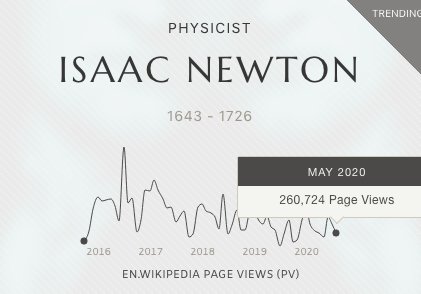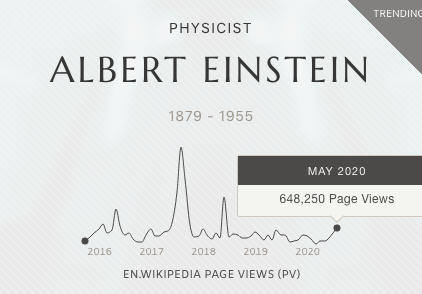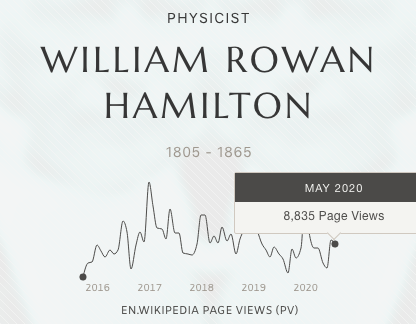1. Inertia.
2. F=ma.
3. Action and reaction.
The key here is the second law, which allows you to write equations for the motion of things. For a spring ma=kx. For a falling rock ma=mgh.
Einstein, from 400k to more than a million
pantheon.world/profile/person…
Lagrange receives from 8k to 16k
pantheon.world/profile/person…
& Hamilton from 7k to 14k
pantheon.world/profile/person…










